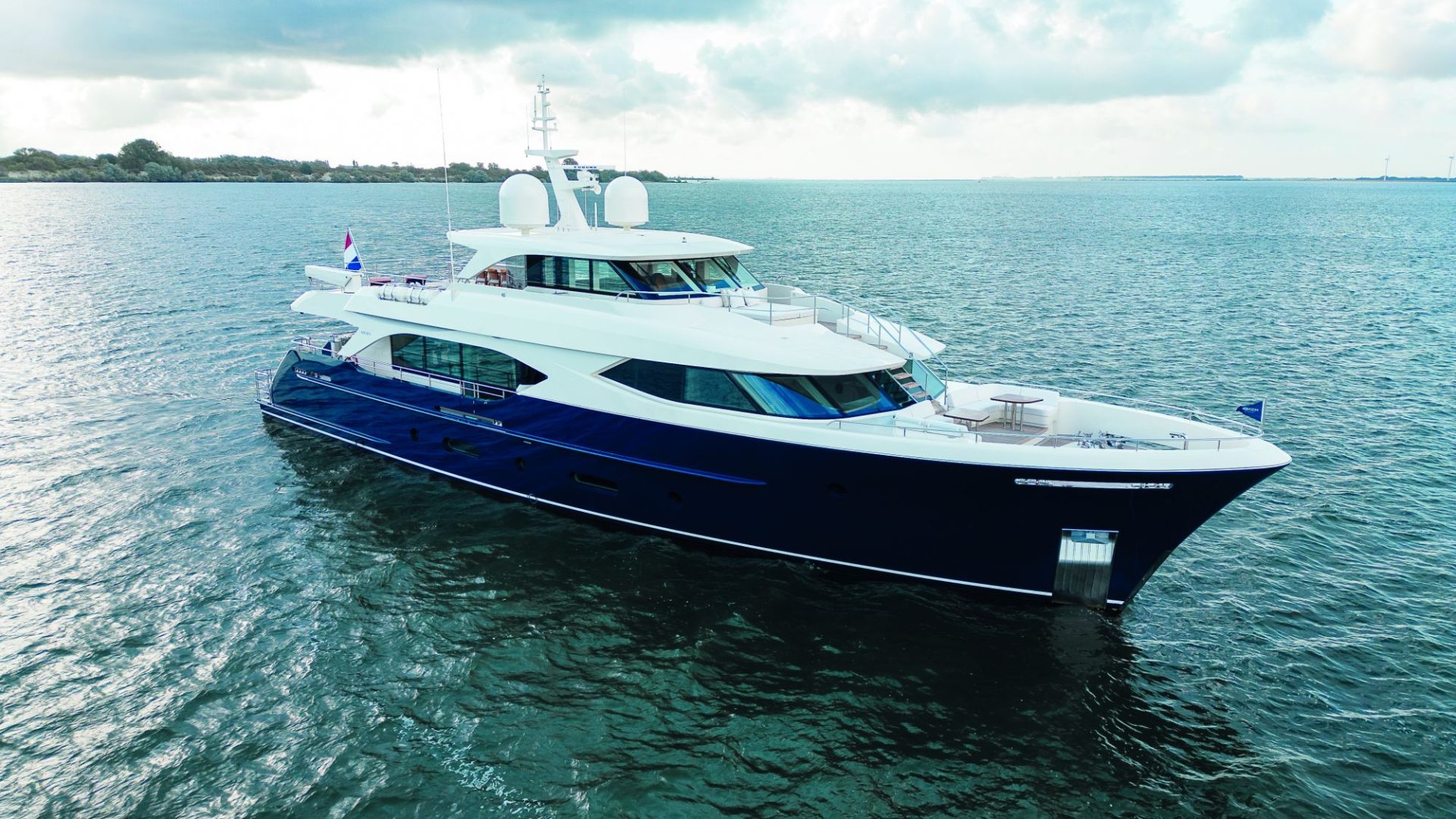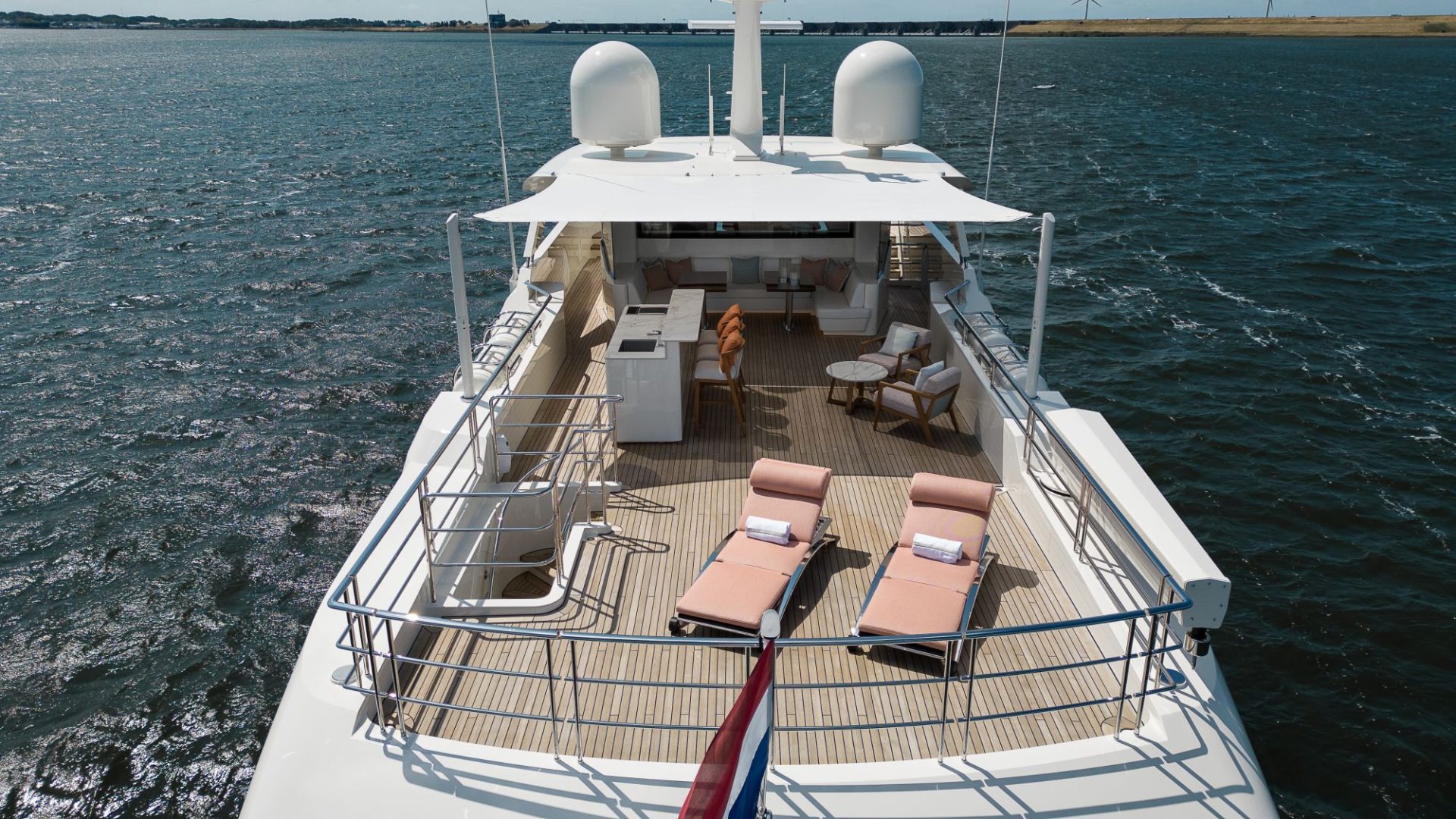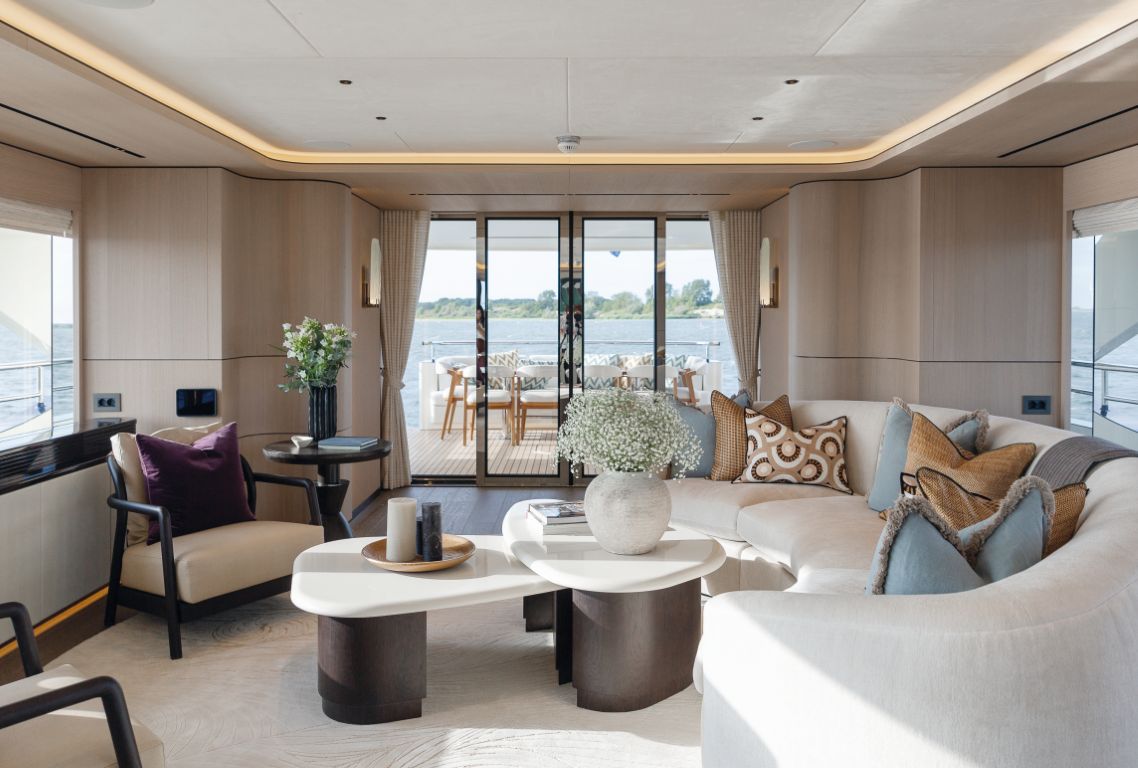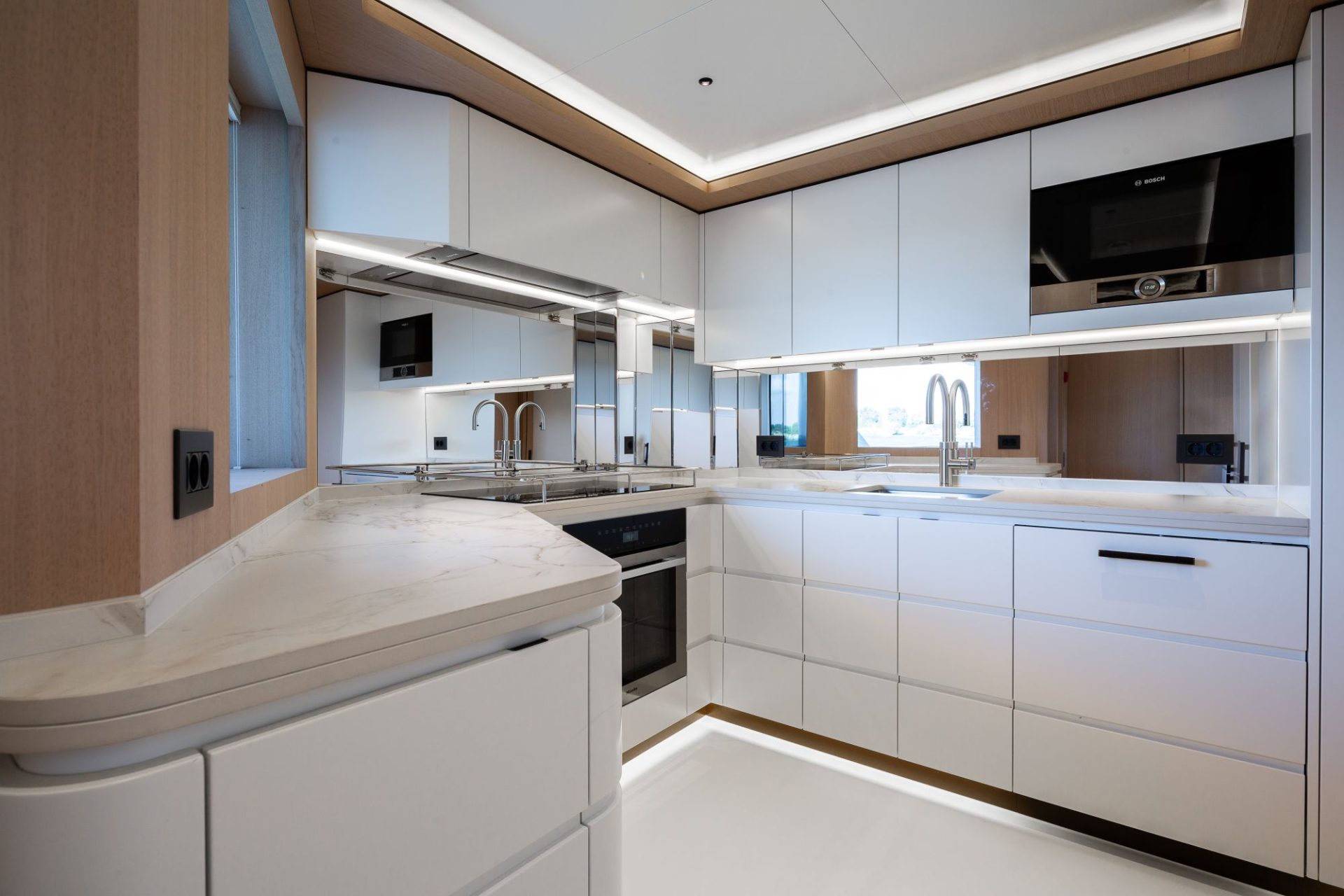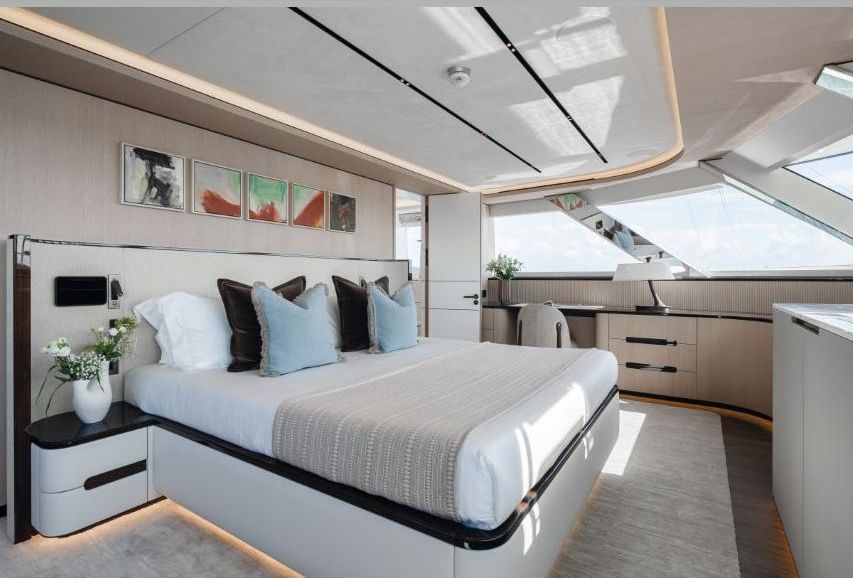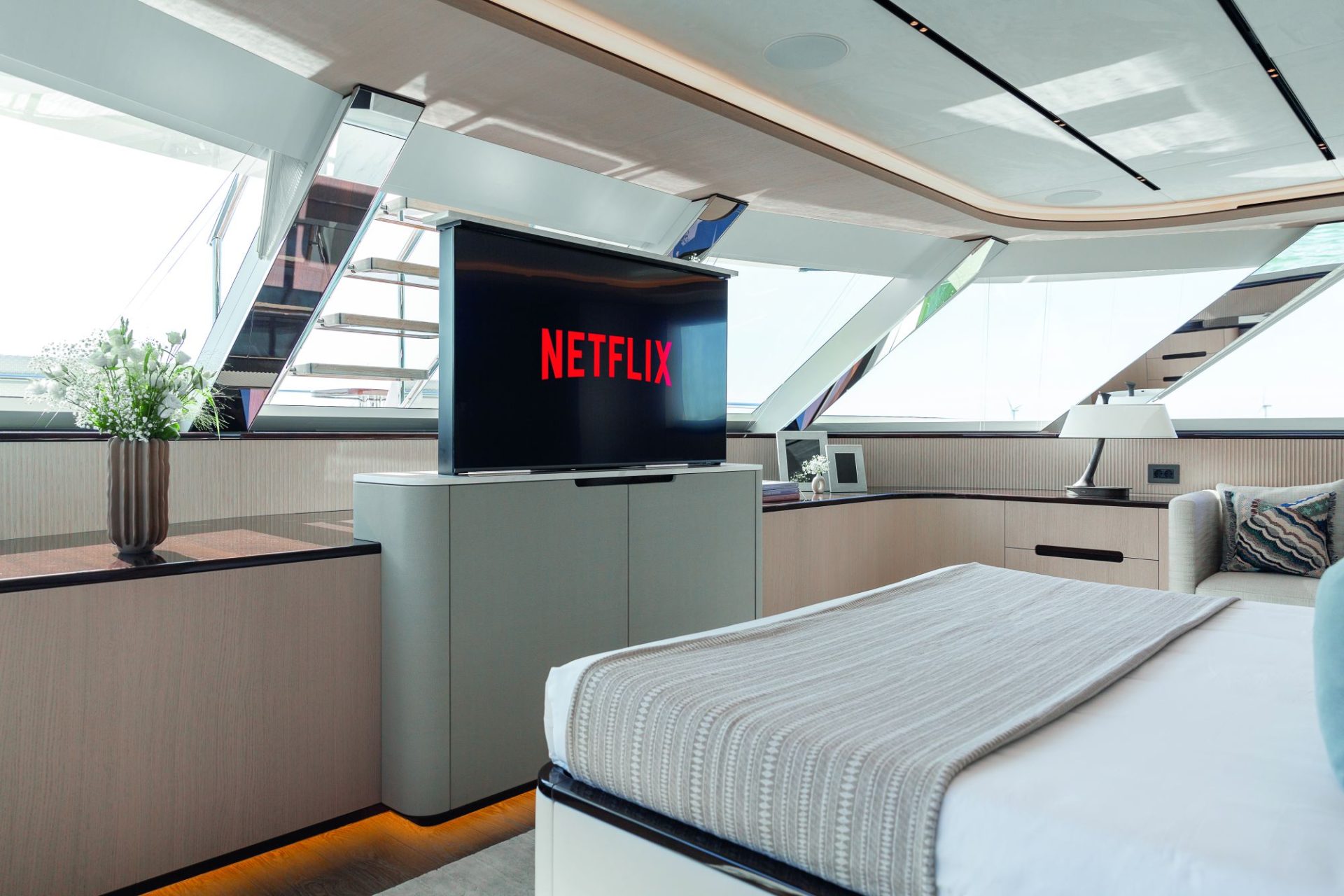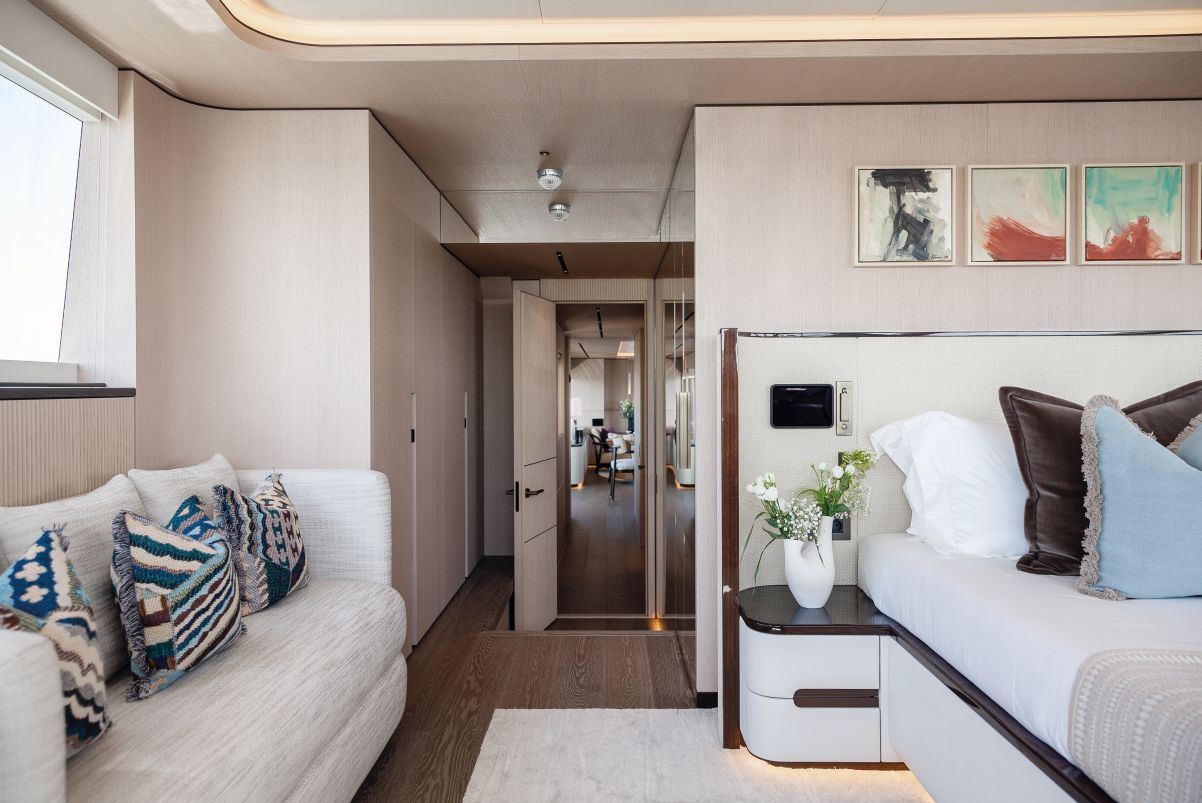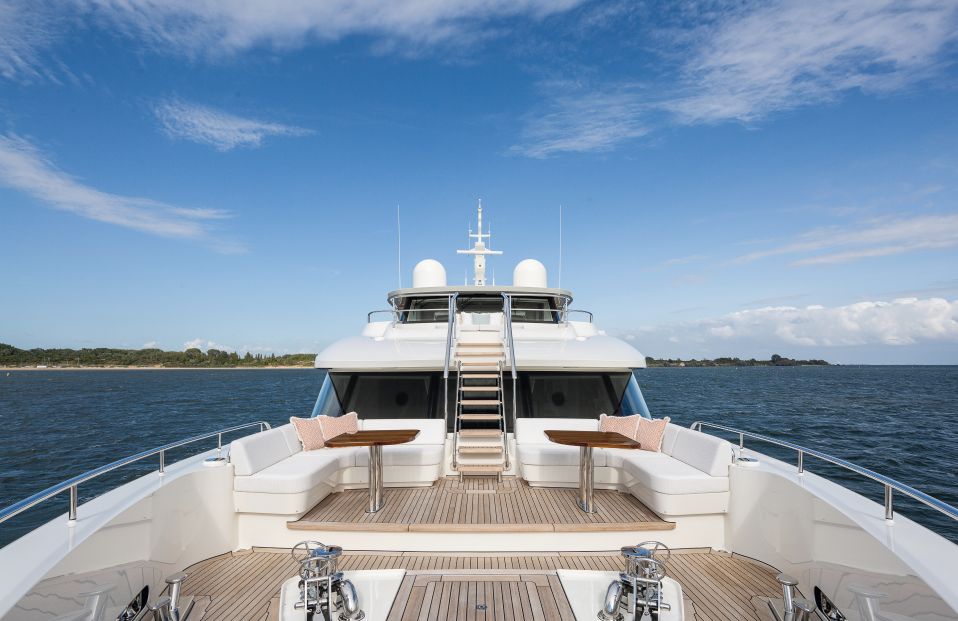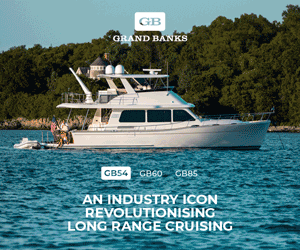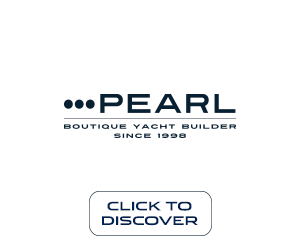Shoot for the Moonen
The Australian-owned Moonen Yachts yard’s latest model, the 110 Mustique, is finally here – and she’s a serious contender for serious boaters who want to go serious places.
Written by Charlotte Thomas
05 February 2024
There are a number of trends doing the rounds on superyachts at the moment that are making their way down to the sub-40-metre sector. There are aft pool terraces, and fold-down balconies that extend quasi-beach clubs; transformer sections that convert one thing to another; there are even forward master cabins that creep into foredeck working areas and offer semi-star-filled views and mini private terraces.
Then there are the special few yachts that place emphasis on something else – the ability to cruise long distances in any conditions, with seamanlike design features and an abundance of storage space. It is into this rarefied bracket that the all-new Moonen 110 Mustique slides, combining superb Dutch quality and finishing with a go-anywhere ethos.
In some ways, this exceptional addition to the fleet doesn’t come as a surprise – the 110 is the brainchild of Matthew and Louise Baxter, who fell in love with a Moonen on Sydney Harbour and then, in 2019, bought the yard located on the other side of the world in s’Hertogenbosch, the Netherlands.
“The Moonen the Baxters fell in love with was a very successful semi-custom model, the 97,” begins Victor Caminada, Commercial Director at Moonen Yachts. “They loved the boat, and they also saw how they could improve it. The 110 is their creation.”
The result is something rather special. The quality of build that Moonen achieves is second to none, with exquisite finishing coupled with exceptional engineering – the sumptuous, understated elegance of the main saloon, for example, is mirrored in an engine room that is perfectly laid out, with heaps of space and abundant headroom. Indeed, headroom is a strong theme throughout the yacht, with 2.15 metres on the main and upper decks delivering a real sense of space and luxury.
Moonen describes the 110 as a look to the future with a nod to the past – in particular, drawing on the huge success of the classic 84 and 97 models, and evolving every aspect to encapsulate more modern touches and technological advances. The exterior lines, drawn by René van der Velden, are certainly redolent of her predecessors but with modern styling cues that are more elegant and timeless than avant-garde. Diana Yacht Design once again collaborated on the naval architecture.
“René has been working with Moonen for more than 25 years, and he was tasked with keeping the DNA, which is recognisable from a mile away, but also including some modern ingredients,” says Caminada. “You can see those throughout the exterior and interior; we think the yacht will age very nicely.”
Ageing gracefully is one thing – going places while doing it is quite another. In this area, the 110 will shine.
“In Australia, 34 metres is an ideal size because it gives you access to places a larger yacht can’t get into,” offers Caminada. “But Australian waters are very unforgiving – I speak to potential clients from the region who say their fast composite boat doesn’t have the range or can’t take the seas because it’s a long-distance, open-ocean arena. You need the proper hardware, and the 110 offers that.”
There’s the capacious storage under the crew areas that can take additional fridges and freezers, dry stores and spare parts galore. There’s also the issue of waste management, which many forget when thinking of long-range autonomy, and the 110 caters to that with large tanks and space for garbage storage.
Then there’s the sturdy, 1.5-tonne-capacity crane aft up top that can lift a 7.5-metre tender and house it safely on the aft end of the sundeck, over-specced gear in every department, and a proper lazarette. There’s even a dedicated laundry room in the crew area that has four professional Miele machines and a drop-down ironing board.
And then, of course, there’s the issue of range and seakeeping. The 110’s steel hull and solid lines, which include a generous strake in the topsides for those less forgiving dockside moorings, are built for serious cruising. And while she may not be the quickest yacht out there (throttles down, she’ll make just under 14 knots with her A-rated Caterpillar engines), she will literally take you ‘out there’ with a near-4,000-nautical-mile range at 9 knots.
The 110 chalks up 279 gross tonnes of interior, and she makes good use of that space. On the main deck, there’s an inviting saloon with a formal dining area flanked by huge sheets of floor-to-ceiling glass that make you feel like there’s nothing there but the view.
Forward of the saloon to port is a serious galley, where the chef gets a window and a handy door for supplies. There’s a day head off the central atrium, which houses a staircase that rises to the bridge and a skylight above.
Forward, in the wide-body part, the master suite sits majestic with amenities that put larger yachts to shame.
These include robes with proper hanging height for full-length dresses, a luxurious ensuite in pale marble to port, and there’s a generous main cabin area with panoramic views, an impressive vanity, an inviting lounge, and the obligatory pop-up TV.
Guests are equally pampered one deck down with four ensuite cabins set off the central hall – the two aft are both comfortable doubles, with a robe and an ensuite aft of the sleeping area for added insulation from the engine room bulkhead. The two forward cabins are twins that can convert to doubles, and Moonen has deliberately omitted pullmans as they take away from valuable cabin space when folded into the bulkhead.
The crew area forward – which includes two twin-bunk crew cabins with ensuites and a double captain’s ensuite cabin, plus a decent crew mess and the laundry – is spacious and bright and has direct access to the large storage areas on the tank top.
It’s on the bridge deck that the real surprise comes, however. Without a fashionably bijou beach club or transformer gimmicks, it’s easy to wonder if the 110 offers anything for those who like inside-outside living. Up top, those questions are answered. The bridge screams serious navigation, and a wide window in the aft bulkhead means a 360-degree view. Blinds can be closed to offer privacy or to preserve the dark for night running, but otherwise, this feels like a wonderfully open space that blends with the giant deck areas.
Outside, there’s an insanely comfortable U-shaped lounge under the bridge’s aft eyebrow, which is also served by an expanding table for coffee or full-on alfresco dining. Aft of that, there’s a vast open area for loungers and loose furniture, with a wet bar and grill unit with fridge to port.
But there’s more – walk forward to port and you’ll find sunpads on the Portuguese bridge. Walk forward again, and steps lead down to expansive foredeck seating that nevertheless stays clear of the foredeck working areas. The sundeck aft of the bridge eyebrow is protected by awnings that affix to thick, removable carbon poles seated in the coamings, and while the forward areas and aft end are open, Moonen has already added seating holes for more poles, meaning you can shade all the fore and aft outside areas.
The seamanlike approach to the 110 is also evident here. The ground tackle forward is seriously heavy-duty, and the chain locker feels like it has come from a much larger yacht. Even in the sundeck coamings, there are beautiful touches like fully integrated life-raft stowage with colours matching the Oyster White of the superstructure.
It’s the same story for the interior too, which was designed by Studio Indigo in the UK and realised in-house by Moonen’s dedicated interior joinery workshop. This first yacht contrasts dark-stained and whitewashed oaks with stained, dark sucupira hardwood, and various textural effects such as slats and fluting give subtle complexity.
The standard of joinery is first class – open a drawer and you’ll find dovetails, not nails, and the Venus marble in the ensuites is book-matched. It’s an ethos carried through to the engineering and systems too, with everything from the air con to the lighting carefully developed to be efficient and unobtrusive.
A lot of work has been put into sound insulation and vibration mitigation too, which means some of the lowest noise levels you’ll find on any yacht, anywhere.
It’s the epitome of Dutch quality. True, it comes at a price – less so if you calculate by gross tonne rather than by metre – but some things are worth every cent, like quality for peace of mind.
The first 110 heralds a bright future for the Baxters’ venture, drawing on everything that makes classic Moonens so desirable while taking an inspiring step into the future. At the time of going to press, hull #1 was available for immediate delivery at an asking price of ¤17 million. Given the rate of global inflation and the rising cost of raw materials since this first one was started in 2020, it represents excellent relative value for money.
As ever, whether you think she’s worth it comes down to your priorities. If you want gimmicks, you’re perhaps better off looking elsewhere – but if you’re in the market for a well-found, finely finished, superbly engineered, ocean-capable yacht that will last for generations, the Moonen 110 Mustique should be at the top of your list. She’s one of the best yachts we’ve seen for a long while – and that’s not a bad trend to buy into.




